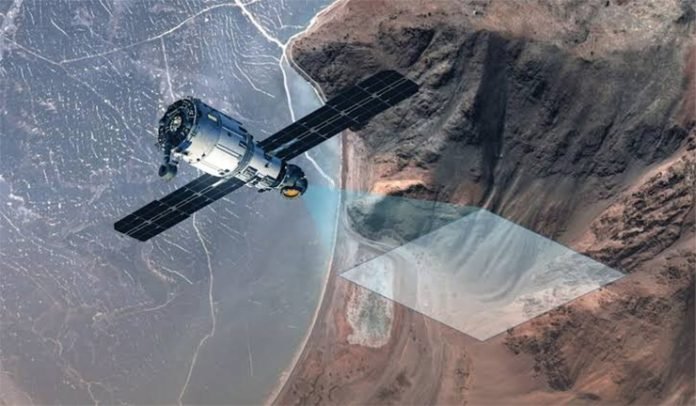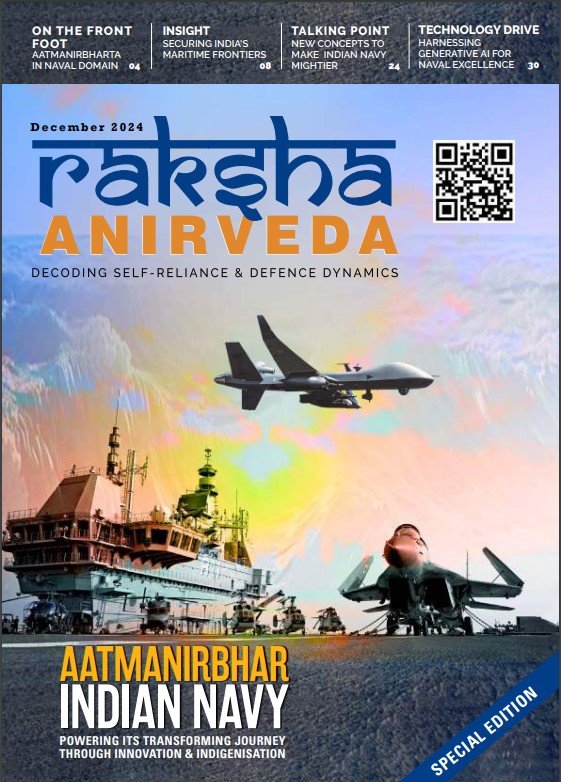In an era of rapid technological transformation and escalating geopolitical complexities, the capability to make swift, well-informed decisions has become critical for a competitive advantage. The OODA Loop — Observe, Orient, Decide, Act — developed by US Air Force Colonel John Boyd provides a foundational model for decision-making in dynamic environments. Initially designed for air combat, its principles have since been widely adopted in various sectors, including national defence, governance, corporate strategy, and emergency response.
At the core of this model lies the observation phase. The effectiveness of every subsequent step — orientation, decision, and action — depends heavily on the quality, accuracy, and timeliness of the information captured during the observation phase. Today, space-based observation, enabled by advanced satellites and sensors, is transforming this process — delivering unprecedented situational awareness and significantly accelerating decision-making cycles across military and civilian domains alike.
This article explores the transformative potential of space-based observation within the OODA framework and outlines strategic pathways for India to develop a future-ready national space architecture.
The Strategic Value of Space-Based Observation
Modern space-based observation leverages state-of-the-art technologies — multispectral sensors, synthetic aperture radar (SAR), infrared imaging, and GNSS (Global Navigation Satellite System) — to provide persistent, high-resolution data from space. These systems surpass the limitations of terrestrial platforms by offering global reach, all-weather capability, and increasing levels of near real-time responsiveness.
Current low Earth orbit (LEO) satellite constellations are already enabling robust Earth observation, while emerging geostationary Earth observation (GEO EO) capabilities promise continuous regional surveillance. Collectively, these assets are powering the next generation of geospatial intelligence (GEOINT), signals intelligence (SIGINT), and environmental monitoring, reinforcing the OODA Loop with data-driven insight.
By reducing uncertainty and delivering timely, high-fidelity intelligence, space-based systems enhance orientation and decision-making, and support precise, effective actions — whether on the battlefield, in policy-making circles, or in the boardroom.
Space-based observation leverages state-of-the-art technologies – multispectral sensors, synthetic aperture radar, infrared imaging, and Global Navigation Satellite System – to provide persistent, high-resolution data from space. These systems surpass the limits of terrestrial platforms by offering global reach, all-weather capability, and increasing levels of near real-time response
Defence Transformation: Enhancing Decision-Making Across Military Echelons
In the defence sector, space-powered observation has become a cornerstone of modern warfare, enabling multi-domain operations at strategic, operational, and tactical levels:
- Strategic Level: Surveillance of adversary movements, missile activities, and force deployments allows for proactive threat detection and strategic resource planning.
- Operational Level: Satellite communications and imaging facilitate coordinated operations across dispersed areas, enabling real-time decision-making, including managing logistics chains and support for operations.
- Tactical Level: Ground units benefit from enhanced situational awareness through accurate navigation and target acquisition and can deliver desired effects based on precision targeting. SAR technology, in particular, allows visibility through clouds, smoke, and dense foliage — crucial for all-weather situational awareness.
By compressing the OODA cycle through rapid observation and orientation, space systems confer a decisive operational advantage. They enable precision-guided operations, reduce collateral damage, and significantly increase mission effectiveness, highlighting the strategic imperative of a strong space capability in national defence.
Civil and Commercial Applications: Driving Resilience and Innovation
The utility of space-based observation extends well beyond defence, with significant impact across civilian and commercial domains:
- Agriculture: Satellite imagery enables precision agriculture by monitoring crop health, assessing irrigation needs, and detecting early signs of disease or drought.
- Logistics: Real-time GNSS data supports efficient fleet management, optimising delivery routes and reducing fuel consumption.
- Urban Planning: Satellite-derived data informs infrastructure development, environmental monitoring, and sustainable urban growth.
- Disaster Management: Space assets provide rapid post-disaster imagery, map flood plains, and support emergency response planning.
Governments can and must leverage space-derived data to formulate policies, enhance service delivery, and respond more effectively to crises. Enterprises can apply it to gain strategic insights, improve operations, and develop competitive advantages. Across all use cases, space-based observation contributes to greater agility, resilience, and sustainability.
Challenges and Ethical Considerations
Despite its transformative benefits, the proliferation of space-based observation raises critical technical, strategic, and ethical challenges:
- System Vulnerability: Satellites are susceptible to anti-satellite weapons, space debris, and cyberattacks that could impair data continuity and national security.
- Data Deluge: The vast volume of space-generated data demands advanced analytics and AI-driven tools to extract relevant insights efficiently.
- Privacy and Civil Liberties: In civilian applications, high-resolution imagery presents potential risks related to surveillance, personal privacy, and data governance.
- Geopolitical Tensions: The increasing militarisation of space is already affecting global security dynamics with the potential to destabilise global peace.
Governments can and must leverage space-derived data to formulate policies, enhance service delivery, and respond more effectively to crises. Enterprises can apply it to gain strategic insights, improve operations, and develop competitive advantages. Across all use cases, space-based observation contributes to greater agility, resilience, and sustainability
To address these challenges, India must prioritise infrastructure resilience, cybersecurity, and ethical oversight. The integration of artificial intelligence (AI) is vital — enabling automated data processing and providing actionable insights. AI can further act as a defence mechanism, enhancing autonomous threat detection and system response.
Integrated and Innovation-Driven Space Architecture for India
India’s space programme, led by the Indian Space Research Organisation (ISRO), has achieved commendable milestones — from the IRS Earth observation satellites to the indigenous NavIC navigation system. To fully harness space-based observation within the OODA framework, India must evolve towards an integrated and innovation-driven space architecture.

Strategic Priorities:
- Develop an Integrated National Space Architecture
Build a cohesive satellite network incorporating SAR, multispectral, and infrared sensors for continuous and multipurpose observation capabilities across defence, governance, and commercial sectors. - Leverage Artificial Intelligence and Machine Learning
Deploy AI-driven analytics platforms to automate data processing, enhance situational awareness, and accelerate decision-making. - Enable Secure, Real-Time Data Sharing
Establish interoperable platforms to ensure seamless data flow among government agencies, defence forces, and private sector entities. - Strengthen Public-Private Collaboration
Encourage co-development models, support space tech incubators, and promote industry-academia partnerships to drive innovation and commercialisation. - Develop a Competitive Space Industrial Base
Invest in building a globally competitive space manufacturing and service ecosystem that can participate in the international supply chain. - Enhance Cyber and Physical Resilience
Prioritise the security of space assets through robust cybersecurity frameworks, system redundancy, and threat response mechanisms.
To address the challenges in space-based observation, India must prioritise infrastructure resilience, cybersecurity, and ethical oversight. The integration of artificial intelligence (AI) is vital – enabling automated data processing and providing actionable insights. AI can further act as a defence mechanism, enhancing autonomous threat detection and system response
Policy Enablers:
- Regulatory Reform: Simplify licensing, spectrum allocation, and compliance mechanisms to attract private investment and accelerate satellite deployment.
- Innovation Incentives: Offer targeted grants, R&D tax credits, and procurement support to boost domestic space capabilities.
- Global Collaboration: Foster international cooperation on joint missions, data-sharing frameworks, and capacity-building initiatives involving the commercial space industry.
- Ethical Governance: Develop clear policy guidelines on data usage, privacy protection, and accountability mechanisms.
- Space Diplomacy: Harness the indigenous space industry’s strengths for collaborative projects with other nations – strengthening India’s role as a responsible space power
Conclusion: Embracing a Space-Enabled Future
Space-based observation is not merely a technological advancement — it is a foundational enabler of smarter, faster, and more strategic decision-making. By revolutionising the observation phase of the OODA Loop, it empowers both governments and enterprises to respond to complex challenges with clarity and precision.
For India, this moment presents a pivotal opportunity. By investing in a resilient space architecture, and fostering innovation, the country can secure its position as a global leader in the space economy and a champion of data-driven governance.
In the 21st century, space is not just the next frontier — it is the backbone of terrestrial success. India must act decisively to build and lead in this space-enabled future.
The writer is a veteran with more than three decades of military service and a former UN peacekeeper. He has served in various military organisations related to Operations, and Space & Defence procurement. He is currently Vice President - Growth Operations at Dhruva Space. The views expressed are of the writer and do not necessarily reflect that of Raksha Anirveda






